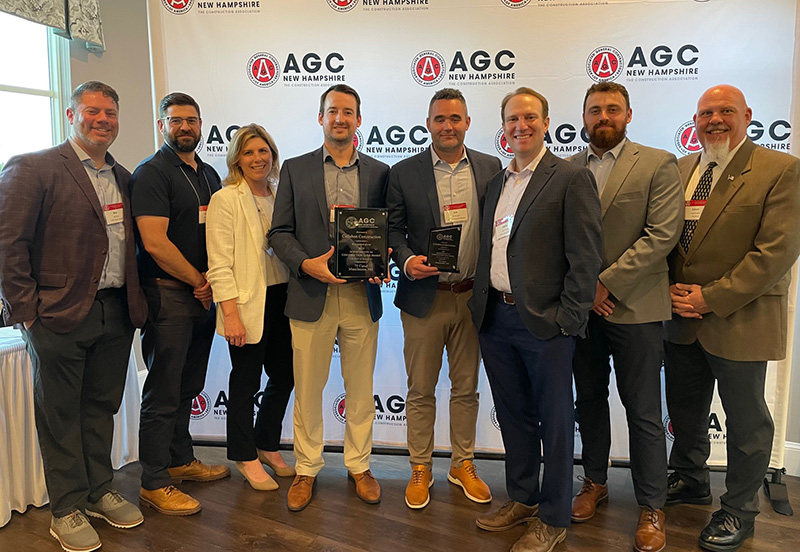News: Construction Design & Engineering
Posted: May 13, 2009
"Newsletters"
Ask people involved in marketing for a definition of the term and you're likely to get a different answer from each person you talk with. Why? Probably because the field is so all-encompassing.
You would, though, undoubtedly find agreement on many of the major goals of marketing, such as:
* promoting the name, reputation, staff and interests of your company and its products/services;
* making people aware of who you are, what you can do and how to contact you;
* making people aware of your past and present successes;
* generating feedback that helps to fine-tune your existing products and services—and develop new ones;
* generating qualified leads for new business; and
* maintaining positive relations with your existing clients, leading to future business.
I'm sure you can add considerably to this list, but for the moment, let's agree that this covers our priorities.
What one tool, available to businesses of any size, in any industry, can effectively accomplish virtually every goal listed? I suggest the answer is the newsletter.
Newsletters come in all sizes, shapes and variations—the sophisticated four-color dazzlers, the standard trade association updates, and the one-pagers from your dentist warning of the dangers of gingivitis. However, all effective newsletters—those that are read and accomplish the goals listed above—have certain characteristics in common.
These are the keys to a successful newsletter:
1) Analyze your target audience and then provide information of interest to the reader. He's not interested in your bowling team score or whose birthday it is this month. Give him some tips that help him in the operation of his business and he'll not only be your friend, but he'll remember you when it's time to do business.
2) The promotional side is extremely subtle. A newsletter is not an ad for your company. The same principle that makes public relations so effective (it's perceived as someone else saying nice things about you) should be at work here. Tell your story in a straightforward, factual manner, without all the adjectives. You don't have to clobber people over the head—they'll get the message.
3) Make it entertaining. Balance the useful information with items that make it fun to read. Your objective is to have people look forward to receiving your materials, not only because it helps them out, but also because they enjoy reading it. Don't be afraid to inject some humor. It works.
4) Don't skimp. Give your newsletter a professional look; it's a reflection of your company. And most importantly, distribute it regularly. Whether it be two, three or four times a year, set up a schedule and don't let anything interfere with it. The cumulative effect is enormous, but it can only be accomplished through consistency.
Cost? People are often surprised to discover that a professional looking, 4-page newsletter, including design and format, copywriting and printing of 500-1000 copies, can be produced for as little as $1,500-$2,000. In addition, "newsletter services" exist that offer a soup-to-nuts publications that can be customized with your company's information for as little as $1,000 or so.
5) Incorporate a reply device, either as a tear-off or as a separate card. Make it easy for those receiving the newsletter to request additional information or a meeting, indicate a future need or offer suggestions and comments on your efforts.
It's clearly impossible to do anything more than scratch the surface regarding newsletters in a column of this size.
If you're not already using this valuable tool, I suggest you either do some reading, take one of the many excellent seminars offered on the topic and/or talk with a professional. It's probably a lot easier and less expensive than you imagine to produce a first-rate newsletter, and the return on your investment, both tangibly and intangibly, can't be beat.
David Wood is a copywriter, newsletter publisher and marketing consultant, Deering, N.H.
MORE FROM Construction Design & Engineering
Nobis Group awards Robinson and Moreira STEM scholarships
Concord, NH Nobis Group, a 100% employee-owned consulting firm specializing in engineering and environmental solutions across the Northeast, has named the recipients of its 2025 STEM Scholarship: Andie Moreira of
Columns and Thought Leadership

Ask the Electrician: Is summer a prime time for commercial electrical maintenance?
The answer is “Yes!” While January marks the official new year, many businesses view September as a fresh start. This makes summer an ideal time for commercial property owners to schedule long-term electrical maintenance projects.

The rise of incubators and co-working spaces: The latest in life sciences - by Matt Combs
In recent years, the life science industry has witnessed a shift in how companies operate and innovate. One of the key driving forces behind this transformation is the emergence of incubators and co-working spaces specifically tailored to meet the unique budget and schedule needs of startups.

The design-build advantage: Integrated interior design solutions - by Parker Snyder
When it comes to corporate interior spaces for both commercial and industrial projects, partnering with a design-build firm with in-house interior design services can offer clients many benefits. Unlike traditional delivery methods where interior designers operate independently from the design and construction teams, often creating a longer project timeline as cost negotiations and revisions ensue

Careers in Construction Month focus on training and safety - by Joe Camilo
October is Careers in Construction Month, and rarely has it been more consequential. According to our chapter’s national parent organization, the construction industry needs to attract half-a-million new workers in the coming year to meet demand. Addressing that need is a huge job, but we at ABC MA are trying to do our part.







.png)
